Abstract
The histogenesis of the bursa of Fabricius and of bone marrow was studied by a biological cell marking technique based on differences in the nuclear structure of two species of birds, Japanese quail (Coturnix coturnix japonica) and chick (Gallus gallus). In quail cells the nucleus contains a large amount of heterochromatin associated with the nucleolus. That makes it possible to distinguish them from chick cells after Feulgen-Rossenbeck staining and by electron microscopy. By grafting bursal rudiments and limb buds of quail into chick and inversely it was possible to demonstrate that the whole hemopoietic population of the bursa of Fabricius and of bone marrow is derived from bloodborne extrinsic stem cells. Neither endoderm nor mesoderm of the bursal rudiments is capable of differentiating into lymphoid cells. Combinations of quail bursal endoderm with chick homologous mesenchyme showed that the reticular cells of the follicles are the only endodermal derivatives of the bursa. The mesenchymal bursal component gives rise to the interfollicular connective cells. The contribution to bone marrow histogenesis of cells of vascular and blood origin, on one hand, and of the elements of the cartilaginous model, on the other hand, was analyzed. It appeared that osteoblasts, osteocytes, and stromal cells of marrow are derived from the perichondrium. In contrast, the endothelium of the vascular buds and the hemopoietic cells which invade the diaphysal cartilage during the endochondral ossification process do not belong to the mesenchymal bone primordium but have a fully extrinsic origin.
Full text
PDF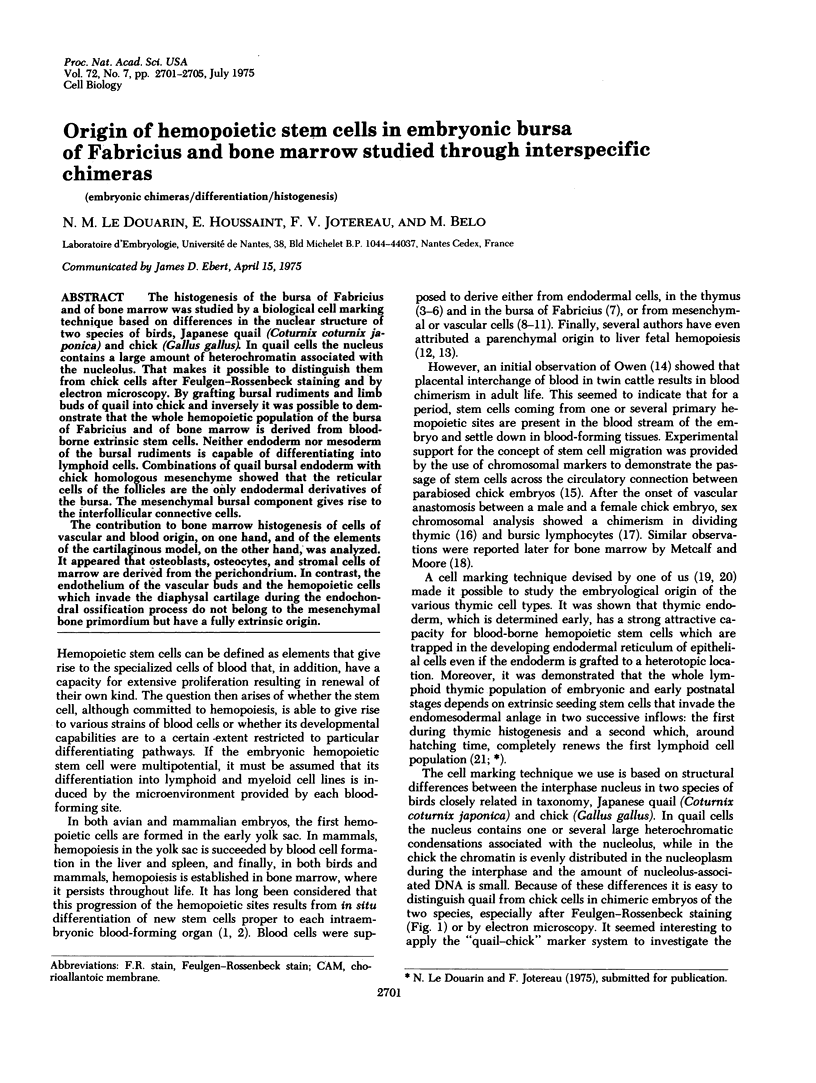
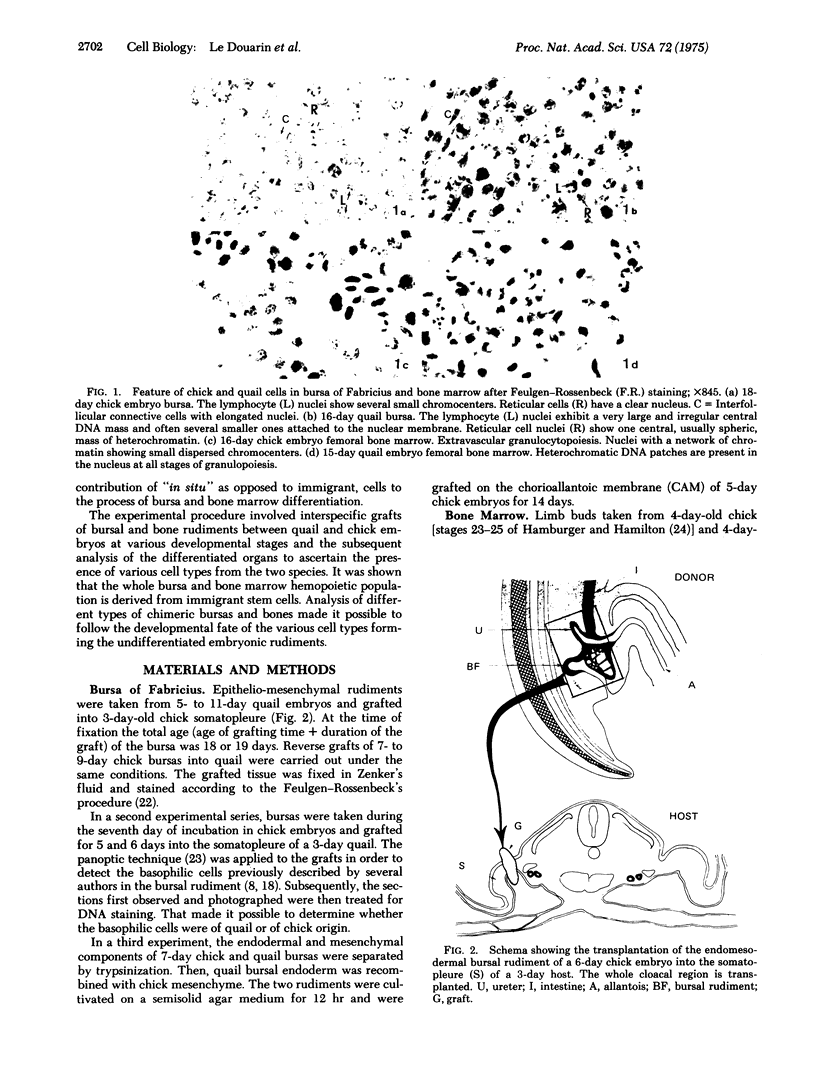
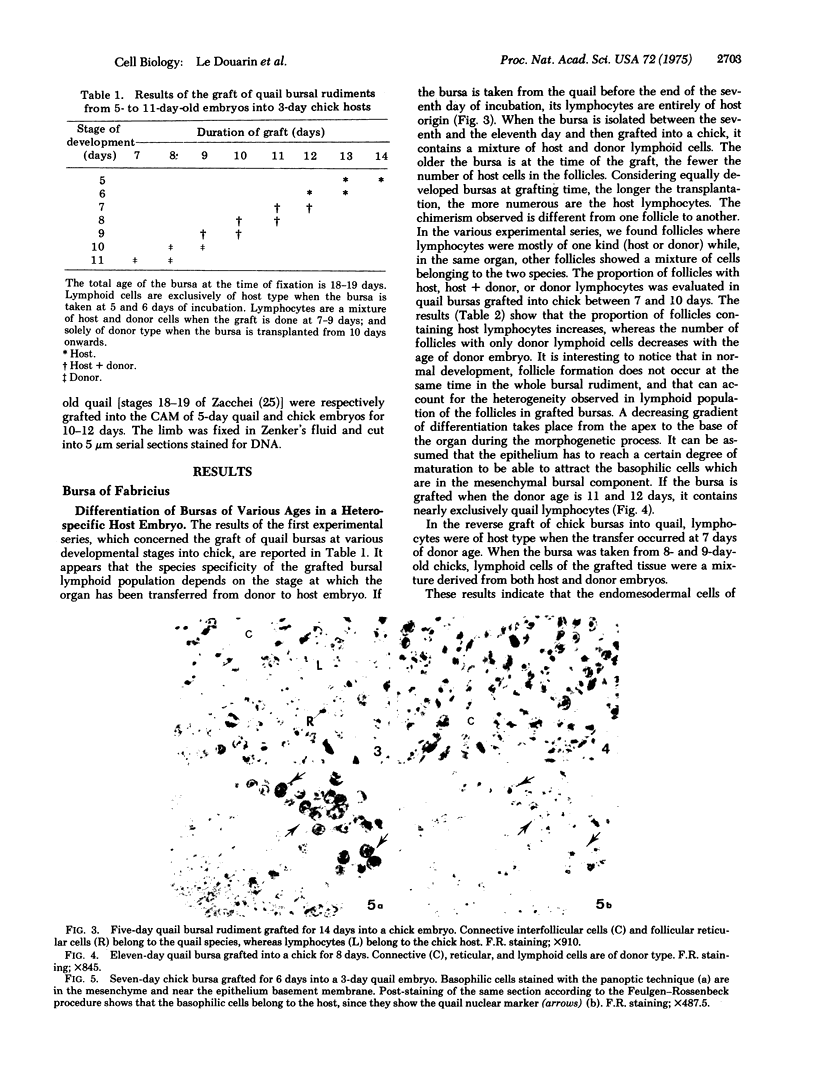
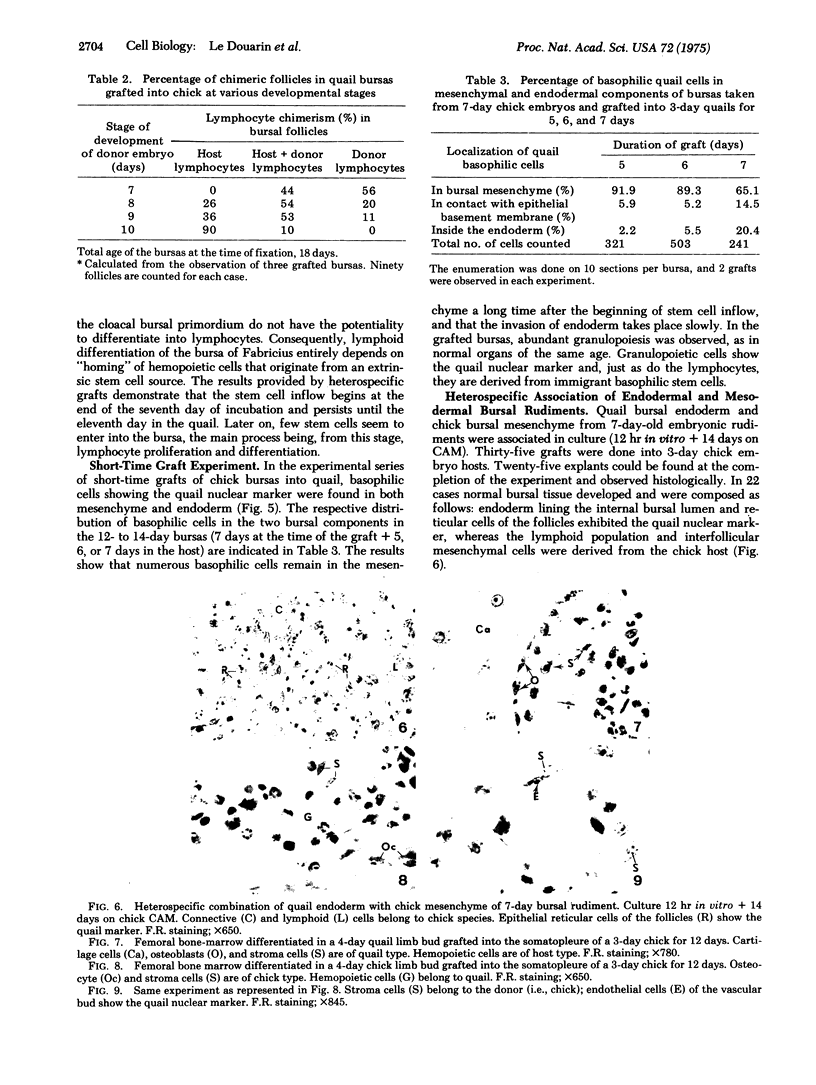
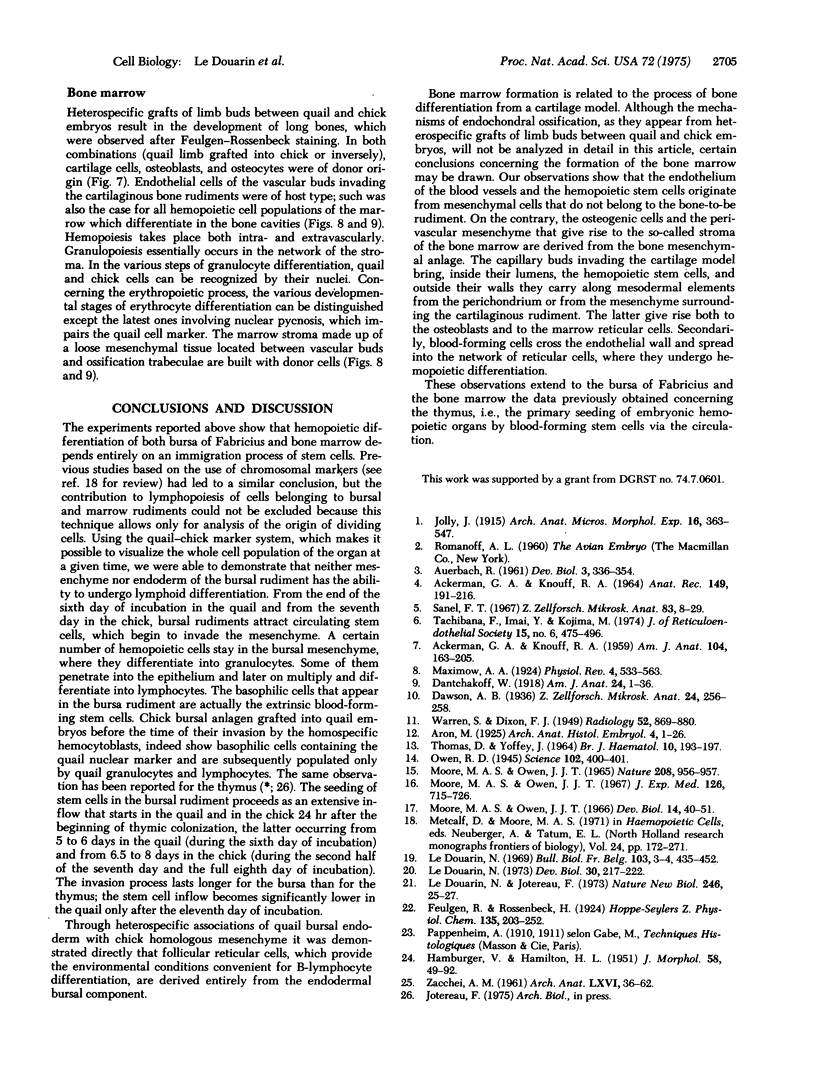
Images in this article
Selected References
These references are in PubMed. This may not be the complete list of references from this article.
- ACKERMAN G. A., KNOUFF R. A. LYMPHOCYTE FORMATION IN THE THYMUS OF THE EMBRYONIC CHICK. Anat Rec. 1964 Jun;149:191–215. doi: 10.1002/ar.1091490204. [DOI] [PubMed] [Google Scholar]
- ACKERMAN G. A., KNOUFF R. A. Lymphocytopoiesis in the bursa of Fabricius. Am J Anat. 1959 Mar;104:163–205. doi: 10.1002/aja.1001040202. [DOI] [PubMed] [Google Scholar]
- AUERBACH R. Experimental analysis of the origin of cell types in the development of the mouse thymus. Dev Biol. 1961 Jun;3:336–354. doi: 10.1016/0012-1606(61)90051-3. [DOI] [PubMed] [Google Scholar]
- Le Douarin N. A biological cell labeling technique and its use in expermental embryology. Dev Biol. 1973 Jan;30(1):217–222. doi: 10.1016/0012-1606(73)90061-4. [DOI] [PubMed] [Google Scholar]
- Le Douarin N. Particularites du noyau interphasique chez la caille Japonaise (Coturnix coturnix japonica) Bull Biol Fr Belg. 1969;103(3):435–452. [PubMed] [Google Scholar]
- Moore M. A., Owen J. J. Chromosome marker studies on the development of the haemopoietic system in the chick embryo. Nature. 1965 Dec 4;208(5014):956–passim. doi: 10.1038/208956a0. [DOI] [PubMed] [Google Scholar]
- Moore M. A., Owen J. J. Experimental studies on the development of the bursa of Fabricius. Dev Biol. 1966 Aug;14(1):40–51. doi: 10.1016/0012-1606(66)90004-2. [DOI] [PubMed] [Google Scholar]
- Moore M. A., Owen J. J. Experimental studies on the development of the thymus. J Exp Med. 1967 Oct 1;126(4):715–726. doi: 10.1084/jem.126.4.715. [DOI] [PMC free article] [PubMed] [Google Scholar]
- Owen R. D. IMMUNOGENETIC CONSEQUENCES OF VASCULAR ANASTOMOSES BETWEEN BOVINE TWINS. Science. 1945 Oct 19;102(2651):400–401. doi: 10.1126/science.102.2651.400. [DOI] [PubMed] [Google Scholar]
- Sanel F. T. Ultrastructure of differentiating cells during thymus histogenesis. A light and electron microscopic study of epithelial and lymphoid cell differentiation during thymus histogenesis in C57 black mice. Z Zellforsch Mikrosk Anat. 1967;83(1):8–29. [PubMed] [Google Scholar]
- THOMAS D. B., YOFFEY J. M. HUMAN FOETAL HAEMATOPOIESIS. II. HEPATIC HAEMATOPOIESIS IN THE HUMAN FOETUS. Br J Haematol. 1964 Apr;10:193–197. doi: 10.1111/j.1365-2141.1964.tb00694.x. [DOI] [PubMed] [Google Scholar]
- Tachibana F., Imai Y., Kojima M. Development and regeneration of the thymus: the epithelial origin of the lymphocytes in the thymus of the mouse and chick. J Reticuloendothel Soc. 1974 Jun;15(6):475–496. [PubMed] [Google Scholar]
- ZACCHEI A. M. [The embryonal development of the Japanese quail (Coturnix coturnix japonica T. and S.)]. Arch Ital Anat Embriol. 1961;66:36–62. [PubMed] [Google Scholar]





